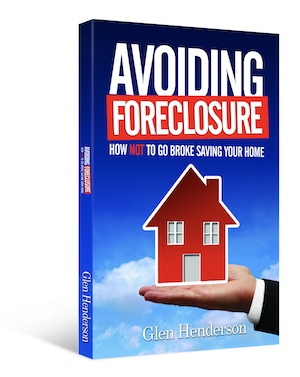Loan Reduction Programs
There are a variety of loan reduction programs through individual lenders and government agencies which can reduce your monthly payments, or even the overall amount owed on the loan, to allow you to make payments and remain in your home. The prospect of foreclosure is scary. But if you’re afraid you can’t meet all your loan obligations, it’s time to start looking for loan reduction programs.
Government Loan Reduction Programs
Principal Reduction Alternative (PRA)
The principal reduction alternative is a broad program that can help lenders whos home is worth less than the amount that they owe. This program is not available for Fannie Mae or Freddie Mac loans. But if you work with one of the 100 lenders that participate in the Principal Reduction Program, then you might be able to get the amount that you owe reduced.
The mortgage must have come before 2009 and you must have a financial hardship. When you refinance using the principal reduction alternative, you should also be able to prove that you have plenty of income to make the new house payment that you’ll be left with.
Home Affordable Unemployment Program
The home affordable unemployment program allows mortgage payments to be suspended for homeowners who are newly unemployed. Anyone who has not gotten a HAMP modification to their loan may be eligible for the home affordable unemployment program. You must also qualify for unemployment benefits, and the total loan remaining must be less than $730,000. You must live in your home.
If you apply and qualify for the progam, you may see your mortgage payments reduced immediately to 31% of your income. This 31% of your income is the recommended ratio of income to mortgage payments. Additionally, your payments may be fully frozen until your income goes back up.
Just like the principal reduction alternative, you cannot qualify for this if you’ve lended through Fannie Mae or Freddie Mac, but those lenders have their own kinds of programs for similar situations.
Lender Reduction Options
There are also loan reduction options that you can apply for and get approved for directly through your lender. These lender programs can help your remain in your house and make affordable payments if extenuating circumstances prevent you from making loan payments like you agreed to.
Modification
Modification allows your lender to reduce your monthly payments, temporarily or permanently, to help you still be able to meet the minimum payments of the loan. If you think that you’ll need temporary or permanent payment relief in order to meet your obligations on the loan, begin talking to your lender about modification. In cases of hardship, like a reduction to income or a disability, you might be able to get a loan modification that allows you to stay in your home and continue to make payments.
Temporary modifications can be helpful if a few months pose a difficult financial time for you. Permanent modifications may be needed if your financial situation has experienced a lasting change.
Refinancing
If your credit score is in a relatively good spot, you may be able to refinance. Unlike modification, refinancing means that your mortgage is paid in full and you get an entirely new mortgage on top of the existing loan amount. Refinancing, for people who have made consistent payments and have increased their credit score over the years, can be a way of reducing your monthly payments and the overall amount that you’ll pay on the loan.
To refinance, you may work with your existing lender or with a new lender. Note that refinancing is an option usually available to people who find themselves in a demonstrably better financial and credit situation than when they first applied for a loan. If you’ve gotten a better salary and/or your credit score has gone up by a lot, you may be able to refinance and reduce your loan payments.
Bankruptcy
While not a loan reduction program in a simple sense, bankruptcy can get the courts involved in your finances to help reduce the total amount that you owe to an individual lender, and to all your lenders in general. It can freeze the foreclosure process to help give you time to put together your finances to make payments. By reducing your unsecured debts, you’ll find yourself in a better position to make payments on the remaining debts.
Obviously, bankruptcy has consequences that reach far beyond simple reduction to your home loans. But if the other options on this list don’t look like they’ll work for you, it’s certainly a financial option to consider.




